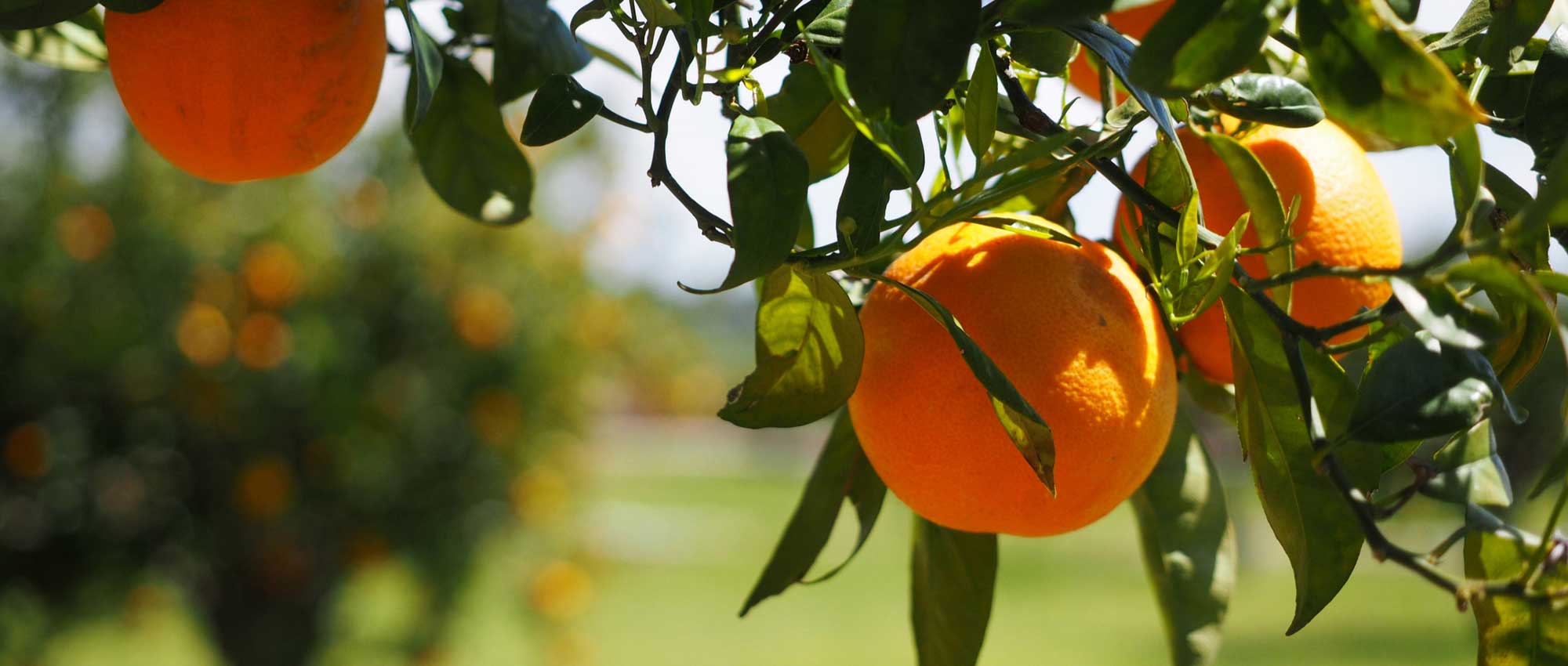
Citrus trees, orange trees and other citrus: how to plant and grow them in pots or in the garden?
Contents
Citrus trees in a nutshell
- Citrus trees provide both edible and decorative fruits, rich in vitamin C
- Most of them have evergreen foliage
- They offer a lovely white or pink flowering, fragrant
- They are generally grown in open ground in the South, and in pots in the rest of France
- They enjoy full sun and warmth
- They bring an exotic touch to the garden, evoking the South, the Mediterranean coast, the sun…
A word from our Expert
Citrus trees are bushes or small trees with shiny leaves, often evergreen, that bring a touch of exoticism and elegance to our gardens. Their charm lies not only in their bright green foliage but also in their magnificent white or pink flowers, subtly scented, which delight the senses from spring onwards. However, it is their fruits, bursting with colours ranging from vivid yellow to bright orange, and deep green, that truly capture attention. Rich in juice and flavour, citrus fruits offer a tangy or sweet flesh, a true delight for freshness lovers. Their exceptional aromatic character makes them indispensable in cooking and baking, as well as in aromatherapy. The entire plant, thanks to its richness in natural essences, is used to create essential oils, refined perfumes, and floral waters.
Some citrus trees, such as lemons, oranges, or grapefruits, are very popular and regularly consumed worldwide. However, the vast universe of citrus also contains rarer treasures such as kumquats, finger limes, kaffir limes, yuzu, or the fascinating Buddha’s hand. Each variety brings its own touch, whether through the original shape of its fruits or its surprising flavours. Growing citrus trees is also a way to bring a bit of Mediterranean warmth into your outdoor space, evoking sunshine, holidays, and the sweetness of the South.
However, citrus trees require a specific climate. These plants, well-suited to warm and sunny regions, are relatively frost-sensitive and not very hardy. If you are fortunate enough to live in a Mediterranean climate, growing them will be a breeze. For others, it will be necessary to plant them in a pot to shelter them during the cold season, under a veranda or an unheated greenhouse. Citrus trees love full sun, so they require a bright and protected exposure. They thrive in well-drained, rich, fresh, and light soils, preferably non-calcareous. It is also essential to place them in a wind-sheltered spot to prevent their leaves and flowers from being damaged.
also requires a bit of attention. In pots, they should be repotted every three to four years to provide them with fresh and nourishing substrate. Although tolerant of heat, they do not appreciate prolonged drought. Regular watering is therefore essential, especially in summer, to ensure an abundant and quality harvest. Outside the Mediterranean basin, wintering in a sheltered spot is imperative to protect them from frost.
Botany
Botanical data
- Latin name Citrus sp.
- Family Rutaceae
- Common name Citrus trees, Lemon trees, Orange trees...
- Flowering generally in spring
- Height between 1.5 and 10 metres
- Exposure sun
- Soil type rich, light, draining, cool, non-calcareous
- Hardiness often between 0 and -10 °C
Citrus trees are bushes or small trees that offer white, fragrant flowering and simple, often evergreen foliage… but they are mainly cultivated for their fruits, which are generally yellow or orange, with a sour or tangy taste, sometimes bitter. Most of them belong to the genus Citrus. They encompass about thirty species. There are also a few that are classified under the genera Poncirus and Fortunella (the kumquat). Citrus trees include lemons, oranges, clementines, mandarins, grapefruits, bitter oranges, kumquats…
Originally, citrus trees come from Southeast Asia. They have been cultivated for thousands of years and have been hybridised by humans, resulting in a beautiful diversity today. In France, they are mainly grown along the Mediterranean coast, in the Côte d’Azur and Corsica, where the climate is favourable. Menton. Nowadays, oranges are the most widely cultivated fruits in the world.
Citrus trees belong to the Rutaceae family. This is the family of rue, Ruta graveolens, a small aromatic bush with medicinal properties. This family also includes Skimmia, a bush commonly grown in gardens, Fraxinelle (Dictamnus albus), a lovely perennial with white or pink flowering, and Choisya ternata, also known as Mexican Orange. Rutaceae are characterised by being plants generally rich in essential oils. They are often very fragrant, both in terms of flowering and foliage, and many of them have medicinal properties.
Etymologically, the word “citrus” comes from the Latin acrumen, meaning something that has a sour taste.
When grown in pots, citrus trees typically reach a maximum height of up to two metres. In the ground, they grow larger, but it is quite rare for them to exceed ten metres in height. Orange trees are among the tallest, while kumquats and citrons are much shorter, around three metres high. Citrus trees generally have a rounded habit, but they can also be slightly pendulous, like the mandarin tree Citrus unshiu ‘Satsuma’. When grown in pots or greenhouses, citrus trees are regularly pruned. Additionally, keeping these plants relatively low makes harvesting the fruits easier, as they become more accessible. Citrus trees often bear thorns on their branches. The Poncirus trifoliata is one of the most thorny… It can even be planted as a defensive hedge!
Citrus trees generally flower in spring, often between March-April and June-July. The four seasons lemon tree is perpetual: it has the advantage of flowering several times a year! The flowers are sometimes solitary but can also be grouped in clusters or cymes. Citrus trees offer white flowers, sometimes slightly pink or purplish. Their flowering has a very pure, simple appearance.
The flowers are pleasantly fragrant. Those of the bitter orange are highly sought after and are used to produce Neroli essential oil as well as orange blossom water. Citrus trees have a melliferous flowering. Their flowers contain nectar that attracts pollinating insects.

The flowering of citrus trees: Bitter orange (photo Zeynel Cebeci), Kumquat (photo Thanh Nam Nguyen), and Poncirus trifoliata (photo Amada44)
The flowers have a regular, quite classic shape. They measure between two and five centimetres in diameter. They consist of five petals (sometimes four) and five sepals. In the centre, the flower has between twenty and thirty stamens, which carry pollen at their tips, as well as a pistil. The flowers are hermaphroditic: they contain both male (stamens) and female (pistil) organs.
Some citrus trees are parthenocarpic: the fruits form without fertilisation. This means there are no pips (seeds), as is often the case with clementines.
The majority of citrus trees have evergreen leaves, except for Poncirus, which are deciduous. The leaves are attached to the branches by a petiole that is often winged. The leaves are alternate (arranged one after the other on the branches) and glossy. They have an elliptical or ovate shape and are simple, not lobed (except for Poncirus, whose leaves are divided into three leaflets). They are sometimes dentate along the edge of the lamina. The leaves are light green when young, then turn dark green, but there are also citrus trees with variegated foliage of yellow or cream, such as Citrus limon ‘Variegata’. The leaves are small on the mandarin tree, while they can measure up to 20 cm long on the citron tree.

The foliage of citrus trees: Citrus hystrix (photo Mokkie), Clementine tree and Poncirus trifoliata (photo Karl-Ludwig Poggemann)
It takes a few years for citrus trees to start producing fruits. The majority of species bear fruit between autumn (October-November) and early spring (April-May). However, lemon trees can produce fruit all year round. This is why they are sometimes referred to as the “four seasons lemon tree.” The fruits of citrus trees remain attached to the plant for a long time, and they can take a year to reach ripeness. It is common for citrus trees to bear both flowers and fruits at the same time.
The fruits are decorative, adding a touch of bright colour, ranging from yellow to orange, although they can also be green. They are spherical or oblong, except for the very unique fruits of the Buddha’s hand citron. They vary greatly in size, from the large fruits of grapefruit to the mini-fruits of kumquat. Those of the citron can measure up to 25-30 cm long. The skin of the fruits can be smooth or rough and irregular, as seen in the citron. Sometimes, the fruits are striated, having ridges, as in the bitter orange ‘Striata’.
The fruits consist of a rind or skin, a juicy pulp, and pips (seeds). They are often divided into segments. These segments are organised around a central axis and radiate outward. Inside the segments, small fleshy vesicles contain juice. The skin of citrus fruits is full of essential oil glands, making it very fragrant. This is why zest is often used in cooking. The rind varies in thickness depending on the varieties. It is very thin on the kumquat (allowing them to be eaten with the skin!), but much thicker on the citron.
The fruits are appreciated for their sour or tangy taste. Those of the bitter orange are particularly bitter. Sometimes, the fruits are quite sweet, as in the case of oranges. Finger lime is known for its surprising texture, with flesh made up of small beads. The fruits of Poncirus cannot be eaten raw; they must be cooked. Generally, citrus fruits are very rich in vitamin C and have antioxidant properties.
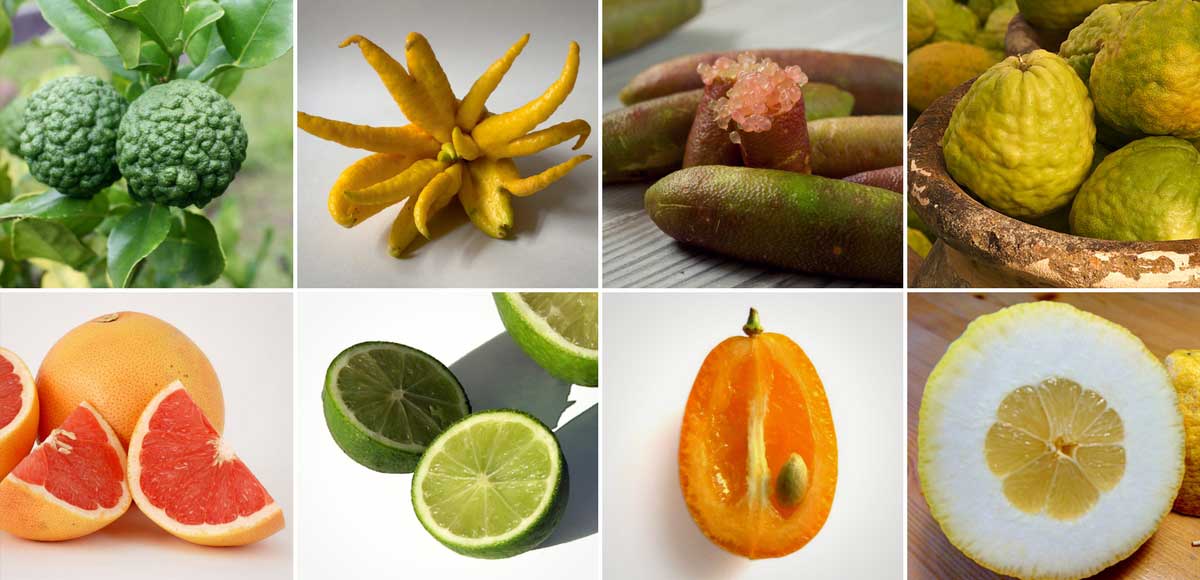
Citrus hystrix (Robyn Jay), Buddha’s hand citron (Robert Couse-Baker), Finger lime (photo Brent Wilson – GAP), Citrus medica (photo INRA DIST), Pomelo (photo Aleph), Lime tree (photo Jpbrigand), Kumquat and Citron (photo Richard Huber)
Citrus trees are not very hardy plants. They are generally considered to not tolerate temperatures below -5 °C, especially lemon trees. However, hardiness depends on the species cultivated, its rootstock, soil moisture, and the duration of the cold spell. The Poncirus is the hardiest citrus, but the bitter orange and mandarin (especially the ‘Satsuma’ variety) also withstand the cold quite well. The former can tolerate down to -20 °C, while the latter two can tolerate -10 °C. Citrus trees, however, need a certain winter chill, and only the dwarf orange, Citrus mitis, can be grown indoors all year round.
Citrus trees contain essential oil glands in their tissues; this is what makes them so fragrant, both in terms of foliage, flowers, and fruits. Some of them allow for the production of essential oils or perfumes, and they often have medicinal properties.
The main varieties of citrus trees
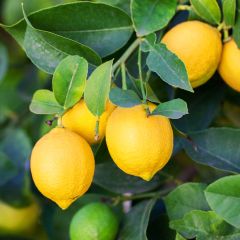
Four Seasons Lemon Tree - Citrus limon
- Flowering time May to July
- Height at maturity 3 m
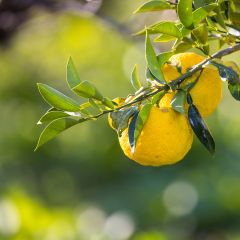
Yuzu - Citrus junos
- Flowering time April, May
- Height at maturity 3,50 m

Meyer Lemon Tree - Citrus x meyeri
- Flowering time April to November
- Height at maturity 2,50 m
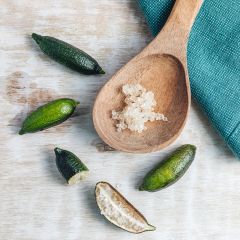
Finger Lime - Microcitrus australasica
- Flowering time April, May
- Height at maturity 3 m

Clementine Tree - Citrus clementina
- Height at maturity 3 m
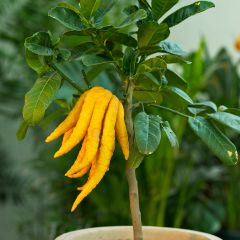
Buddha's Hand - Citrus medica var. sarcodactylis
- Flowering time April to October
- Height at maturity 3 m

Citrus sinensis 'Washington Navel'
- Flowering time April, May
- Height at maturity 2,50 m
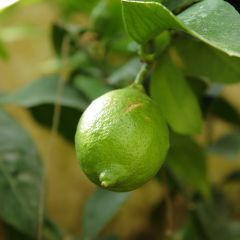
Lime - Citrus aurantifolia
- Flowering time April, May
- Height at maturity 3,50 m

Kumquat Nagami - Fortunella margarita
- Flowering time July to September
- Height at maturity 2,50 m

Ichang Papeda - Citrus ichangensis
- Flowering time April, May
- Height at maturity 3 m
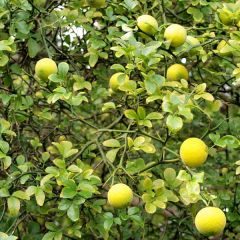
Poncirus trifoliata
- Flowering time May, June
- Height at maturity 4 m
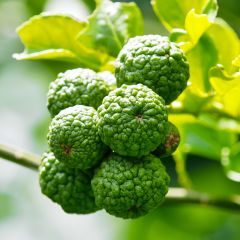
Citrus hystrix - Kaffir Lime
- Flowering time April to October
- Height at maturity 3 m
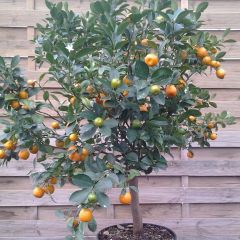
Calamondin - Citrus madurensis
- Flowering time April to October
- Height at maturity 2 m
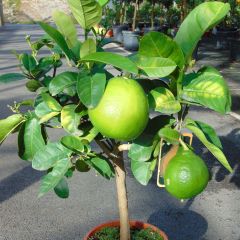
Grapefruit - Citrus x paradisi
- Flowering time April, May
- Height at maturity 6 m
Discover other Lemon trees
View all →Available in 2 sizes
Available in 1 sizes

Available in 2 sizes
Available in 1 sizes
Available in 2 sizes

Available in 3 sizes
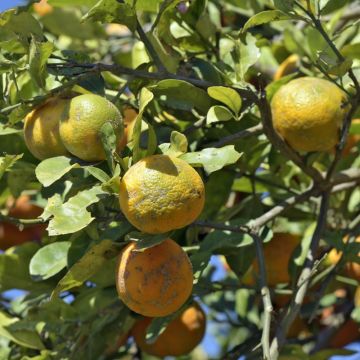
Available in 1 sizes
Available in 3 sizes
Available in 2 sizes
Available in 3 sizes
Planting citrus trees in pots
Citrus trees are sensitive to cold, and pot planting is often preferred, especially in regions where winters are harsh. This method allows for easier protection against negative temperatures by bringing them indoors during winter.
When to plant?
The ideal time to plant citrus trees is in spring, when temperatures begin to warm up, usually around April. At this time, the risk of frost is eliminated, allowing young plants to establish their roots well and benefit from a favourable growth period with the milder temperatures of the beautiful season.
However, if you live in a Mediterranean or coastal climate where winters are milder, it is also possible to plant in autumn, between September and October. This gives them time to develop a good root system before summer arrives, while avoiding periods of excessive heat.
How to plant citrus trees in pots?
Planting citrus trees in pots is ideal for those who wish to grow these bushes in areas where the climate is not suitable for their cultivation in open ground. Here are the key steps to successfully plant them.
1. Choose the right pot or container
Opt for a large pot or container of at least 40 to 50 cm in diameter, with a bottom that is drained to allow for good water flow and prevent stagnation, which could cause the roots to rot. You may prefer a terracotta pot, which promotes root aeration, or a large wooden container, which is more aesthetic and insulating. For larger citrus trees, such as lemon or orange trees, a container on wheels is recommended. This will greatly facilitate movement, especially when you need to bring the plant indoors for winter or reposition it according to sunlight.
2. Prepare the root ball
Before planting, it is important to thoroughly hydrate the root ball of your citrus tree. Place it in a basin or bucket filled with water for about twenty minutes. This will allow the root ball to absorb water, making it easier for the plant to recover once potted.
3. Prepare the bottom of the pot
At the bottom of the pot, install a drainage layer about 5 to 10 cm high. Use clay balls, gravel, or even broken pot shards. This step is crucial to prevent water from stagnating at the roots, which could lead to rot, a common problem with potted citrus trees.
4. Prepare the substrate mix
Citrus trees prefer light, well-drained soil. Mix a special citrus soil with garden soil, a bit of sand to improve drainage, and well-decomposed compost to enrich the substrate. This mix creates nutrient-rich soil while ensuring good root aeration. Place some of this mix at the bottom of the pot, on top of the drainage layer.
5. Place the bush
Gently remove the root ball of your citrus tree from its original container and place it in the centre of the pot. Ensure that the collar (the junction between the roots and the trunk) remains level, slightly above the surface of the soil to avoid any risk of rot.
6. Fill with substrate
Add the remaining soil mix around the root ball, filling in the gaps, then gently press down with your hands to ensure the bush is stable. It is important not to compact too firmly to allow the roots to breathe properly.
7. Water generously
Once the citrus tree is settled in its pot, water generously to thoroughly moisten the substrate and help the root ball stabilise. Watering also naturally compacts the soil without excessively compacting it.
8. Place the pot outdoors
Set the pot in a sunny location, ideally on your terrace, balcony, or in a courtyard. Citrus trees need at least 6 hours of sunlight per day to thrive and bear fruit. However, avoid exposing them directly to prevailing winds, which could dry out the leaves and weaken the plant. A sheltered spot against a south-facing wall is perfect for capturing heat and protecting the bush.
Did you know?
Some varieties of citrus trees, such as the calamondin, can be grown indoors. This decorative citrus tree, with its small tangy fruits, thrives in a bright environment at room temperature, making it ideal for apartment cultivation or in a conservatory.
Read also
Citrus trees: planting and maintenancePlanting in open ground
Planting citrus trees in the ground is possible, provided you have a favourable climate, generally mild in winter, like that found in Mediterranean regions or by the sea. Here are the detailed steps to successfully carry out this planting.
Where to plant?
Citrus trees thrive in full sun. Ideally, install them against a wall facing south to benefit from a warm location with maximum sunlight.
Plant them sheltered from cold or drying winds. They also do not like sea spray.
Plant your citrus trees in the ground if you live in the Mediterranean region. Elsewhere, they should be grown in pots and brought indoors for winter.
Avoid calcareous soils, which may lead to chlorosis by blocking the absorption of mineral elements. Citrus trees prefer neutral or slightly acidic soils. However, there are rootstocks, such as the bitter orange, that tolerate calcareous soils. If your soil is calcareous, it is better to add heather soil or plant the citrus tree in a pot.
Although citrus trees appreciate soils that remain cool, avoid heavy, suffocating soils that retain water in winter. Such soils promote fungal diseases and make the plants less resistant to cold. Citrus trees prefer rather sandy soils. Plant them in well-draining, light soil. You can add pumice, gravel, or a bit of coarse sand to improve water flow. Conversely, if your substrate is too sandy, water and mineral elements may be quickly leached away, so it is advisable to add organic matter or potting soil to improve the soil.
Avoid planting them too close to other plants, as they may hinder their shallow roots. Citrus trees do not like root competition.
→ Learn more with our advice sheet: Which citrus tree to plant according to your region?
When to plant?
As citrus trees appreciate warmth, they should be planted in spring, around April. This allows them time to settle in and start their growth as the soil warms up. If you live in a region with a mild climate (Côte d’Azur, Corsica…), you can also plant in autumn.
How to plant in the ground?
1. Prepare the spacing of the plants
If you plan to plant several citrus trees, it is crucial to leave them enough space to develop properly. Leave a distance of at least four to five metres between each bush to avoid competition for light, water, and nutrients. This spacing also allows for good air circulation, thus reducing the risk of fungal diseases.
2. Dig a large planting hole
Dig a generous planting hole, at least twice the size of the root ball of your citrus tree. The wider the hole, the more room the roots will have to spread. This also promotes better establishment of the bush and faster growth. A large hole also loosens the soil around the roots, facilitating their rooting.
3. Prepare the bottom of the hole
Once the hole is dug, loosen the bottom with a fork or gardening tool. Then add a good amount of well-decomposed compost to enrich the soil. You can also incorporate crushed horn or dried blood, natural amendments rich in nitrogen, which will stimulate the growth of your citrus tree in the months following planting. If your soil is clayey and tends to retain water, it is advisable to mix coarse sand or gravel into the substrate to improve drainage and avoid waterlogged roots.
4. Place the citrus tree in the hole
Gently remove the root ball of your citrus tree from its original container, then place it in the planting hole. Ensure that the grafting point (the part where the rootstock and the grafted variety meet) remains above soil level to avoid any risk of rot and diseases. The grafting point should always be visible after planting.
5. Fill the hole and compact the soil
Gradually fill the hole with the excavated soil, ensuring to compact the soil as you go, but without over-compacting to avoid suffocating the roots. It is important that the plant is well anchored in the soil, but that the roots retain good access to oxygen.
6. Install a stake
Installing a stake is highly recommended to keep the tree upright, especially in windy areas. Plant a sturdy stake next to the trunk, without damaging it, and tie the bush with a soft tie to avoid damaging the bark. This will help your citrus tree stabilise during its growth and prevent it from leaning under the weight of wind or fruit.
7. Water generously
Once the citrus tree is planted, water generously to ensure that the water penetrates well into the soil and allows the roots to settle into their new environment. Good watering is essential, especially during the first weeks after planting, to encourage recovery.
8. Create a basin around the trunk
To facilitate future watering, it is wise to create a slight basin around the trunk. This basin will retain water at the base of the plant, helping it to infiltrate well to the roots without draining away too quickly.
9. Choose the ideal location
Citrus trees need plenty of sun to fruit well. Plant them in a sunny spot, preferably facing south. Avoid overly windy areas, as strong winds can dry out the leaves and weaken the bush. A sheltered location, such as near a wall or in a sunny courtyard, is ideal for promoting the growth and flowering of your citrus trees.
→ Read also: How to grow an orange tree in the ground or in a pot?
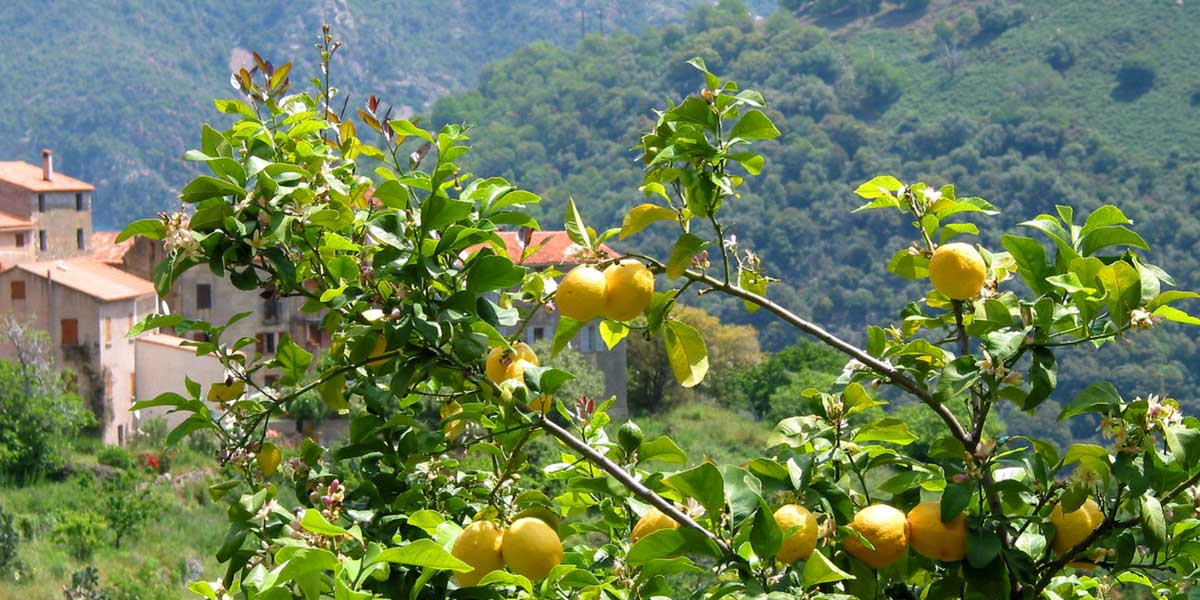
Citrus tree care and pruning
Citrus trees do not like drought; they need to be watered regularly from spring to autumn (you can reduce watering in winter). Avoid using hard water; it is better to water with rainwater. We recommend applying a layer of mulch at the base of your bushes to keep the soil cool for longer and to space out watering a bit more. This will also limit the growth of weeds and provide additional protection against the cold. If you want to save time, you can install a drip irrigation system.
Citrus trees are greedy plants; they have significant mineral element requirements. From spring to autumn, during the growing season, it is best to fertilise regularly. A deficient plant will see its foliage yellowing and will produce far fewer fruits. Add well-decomposed compost at the base of the bush and incorporate it into the soil with light scratching. You can also add fireplace ashes or crushed horn.
Each time you work at the base of the citrus trees, be careful not to damage the roots, which are located just below the soil surface.
For winter, if you grow them in the ground, install a winter cover to protect them from the cold. Similarly, the bush will withstand the cold better if you have applied a layer of mulch at its base and if you have sheltered it from the wind (for example, by planting other bushes as windbreaks).
If you have planted in the ground because you live in a region with a mild climate or because you are growing a slightly hardier citrus tree, remain vigilant and protect your bush if temperatures become exceptionally low, especially if it is in its early years. You can install a winter cover and apply a layer of mulch at its feet.
Prune your citrus trees after fruiting, at the end of winter or the beginning of spring. Pruning helps to give a balanced shape to the bush, remove unsightly branches, and make harvesting easier by limiting the height of the plant. During the first few years, carry out formative pruning to give the bush its general shape. For example, you can give it a rounded shape or prune it into a standard form. In subsequent years, perform maintenance pruning to aerate the centre of the bush and to maintain a balanced shape. Remove dead, damaged, or poorly positioned branches, and cut back the suckers. Learn more in our tutorial Why and how to thin fruit trees?
Make clean and neat cuts, fairly light, on average every two years, and remember to disinfect your tools to avoid transmitting diseases. Also, apply a healing paste on the wounds. This will limit the risk of fungal diseases, such as Mal Secco.
In pots, citrus trees will need to be pruned more frequently than in the ground to better control their growth. You can prune them several times a year, fairly lightly each time.
→ read to learn more: “Citrus trees: when and how to prune them”, Pruning a lemon tree and 6 citrus trees that are frost-resistant, How to grow a lemon tree? and Why are my citrus trees not producing fruit?
Care for citrus trees grown in pots
If you grow your citrus tree in a pot, watering will need to be much more frequent than in the ground, as the substrate dries out faster. It should remain cool or even moist. However, be careful of overwatering; water frequently in summer but reduce watering in winter. Avoid letting water stagnate at the bottom of the pot or in the saucer (empty it after each watering). When indoors, you can mist the foliage.
→ More details on the watering of lemon trees in Solenne’s tutorial.
In pots, citrus trees also have greater fertilisation needs. From spring to autumn, provide liquid fertiliser at least once a month. You will find special fertilisers for citrus trees available commercially.
We recommend repotting your citrus trees every three to four years, preferably at the end of winter or the beginning of spring. Each time, place them in slightly larger pots. In the years when you do not repot them, carry out surface treatments to provide mineral elements. Scrape the surface of the substrate to remove the top three or four centimetres. Replace it with fresh potting soil. Be careful not to damage the roots of the citrus tree, as they are shallow and close to the soil surface.
Bring your citrus trees into a frost-free shelter for winter, such as a conservatory or unheated greenhouse. Choose a bright and airy location, ideally at a temperature around 8 °C. This should not be too high (avoid the inside of houses or flats): citrus trees appreciate a certain coolness. When indoors, do not hesitate to mist the foliage, as they do not like overly dry atmospheres. Bring the pots outside in spring when there is no longer a risk of frost, placing them on your terrace, in the sun.
→ to discover:
- Lemon tree in a pot; growing and caring for
- “Wintering orange trees, lemon trees and other citrus trees”
Diseases and pests of citrus trees
Citrus trees are sensitive to many diseases and pests. Suitable growing conditions limit the risks of their appearance: frequent watering but without excess moisture, planting in sunlight, wintering under cover if necessary, clean pruning with the application of healing paste, etc.
Citrus trees can be affected by the Mal secco. This fungal disease blocks the circulation of sap, leading to the drying out of branches. The disease primarily affects those located at the tips of the plant, ultimately resulting in the total decline of the bush. Cut and burn the affected branches as soon as you notice the appearance of the disease.
They are also sometimes affected by gummosis. It is identified by the secretion of a translucent amber-coloured substance at the site of a wound. Moniliosis is a fungal disease that causes the fruits to rot while still attached to the bush. Remove the affected fruits. As for Tristeza (or CTV, Citrus Tristeza Virus), it is a virus, primarily transmitted by aphids, that causes citrus trees to decline.
Regarding pests: In greenhouses, citrus trees are affected by mealybugs, whiteflies, and red spider mites. Scale insects and whiteflies pierce the plant tissues to extract sap, secreting a honeydew that can lead to the appearance of sooty mould. To eliminate them, we recommend spraying black soap on the foliage. As for red spider mites, they suck the sap from the plant, causing the leaves to yellow, then dry out and fall off. They thrive in dry conditions: do not hesitate to mist the foliage.
Aphids also attack citrus trees by piercing the leaves, causing them to curl in on themselves. You can use black soap. the Mediterranean fruit fly lays its eggs in the fruits. The larvae feed on them, leading to their premature drop. The caterpillars of the citrus leaf miner nibble on the flower buds of citrus trees, as well as the young leaves. Finally, the leaf miner burrows galleries within the thickness of the leaves. These white, sinuous galleries are visible to the naked eye. The leaves then tend to curl, yellow, dry out, and eventually fall off. We recommend cutting and burning the affected leaves.
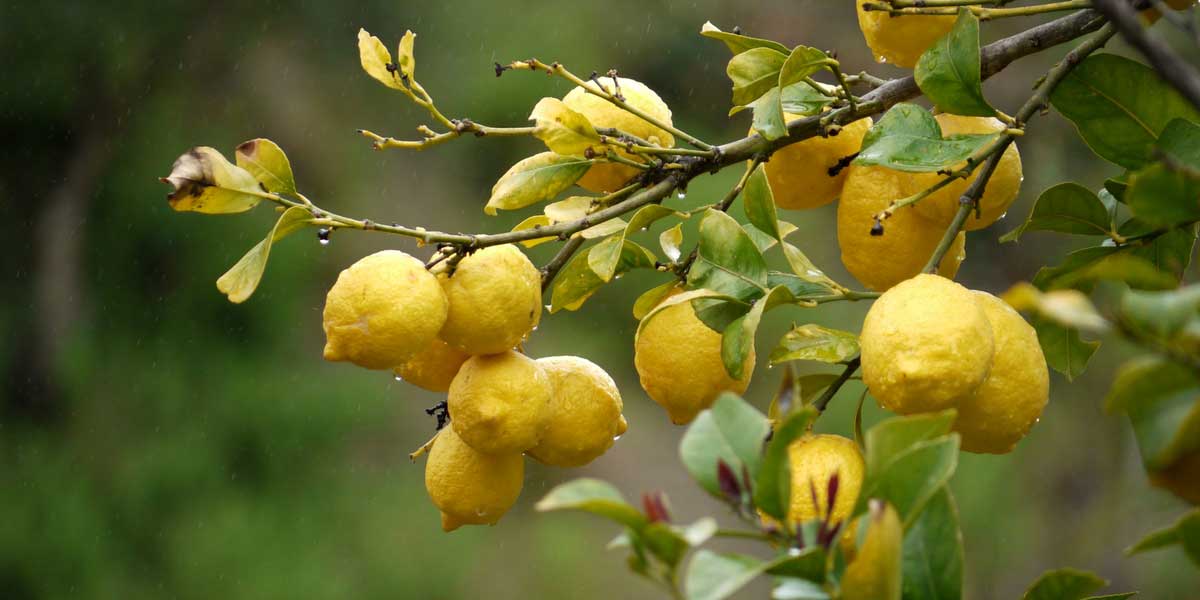
→ to find out more, check our articles: Orange tree: how to identify and treat its diseases and pests? ; The diseases and pests of the lemon tree, Pomelo tree: what are the common diseases and pests? and “Citrus trees: 15 questions and answers about their cultivation”
Multiplication
The most reliable technique for propagating citrus trees is grafting. However, this requires time and is mainly intended for professionals.
Sowing
You can easily propagate your citrus trees by sowing, but the plants obtained from sowing take a long time to start producing fruit, and there is a chance they may not be identical to the original variety. Sow in spring.
- Harvest the seeds from inside the citrus fruits, and rinse them to remove the pulp. It is best to sow the seeds immediately when they are still fresh, or to store them in the refrigerator until ready.
- We also recommend placing them in hot or lukewarm water for at least 24 hours. Seeds that float on the surface will not germinate; only sow those that sink.
- Prepare a pot by filling it with potting soil mixed with a bit of sand.
- Sow the seeds.
- Cover them with about one centimetre of substrate.
- Water.
- We advise covering your sowing with a plastic bag to create a warm and humid atmosphere. Open it occasionally to ventilate and prevent mould development.
- Place your sowing in a bright location, out of direct sunlight, at a temperature between 20 and 25 °C.
- Keep the substrate moist until germination, which occurs in about three weeks.
- Transplant the young shoots when they reach about ten centimetres in height.
Propagation by Cuttings
Propagation by cuttings of citrus trees is a simple and effective method to multiply your bushes and obtain new plants from existing branches. The ideal time to carry out this type of propagation is in summer when the semi-woody branches are mature but not yet fully hardened.
1. Take the cutting
Choose a healthy and vigorous branch, then take a semi-woody cutting of about fifteen centimetres. The semi-woody cutting is located between the soft part of the tip and the harder, woody part. Cut cleanly just below a node, where a leaf attaches to the stem. This node contains cells favourable for root development.
2. Prepare the cutting
After taking the cutting, remove the leaves located on the lower part of the stem to limit transpiration. Leave only two or three leaves at the tip, necessary for photosynthesis while reducing the risk of dehydration. You can also cut the remaining leaves in half to reduce evaporation.
3. Prepare the substrate
Take a medium-sized pot and fill it with a light mixture of potting soil and sand or perlite to ensure good drainage. Citrus trees prefer a well-aerated substrate. Lightly compact to stabilise the substrate while leaving enough lightness for the young roots to develop.
4. Use of rooting hormone (optional)
Dip the base of the stem in a rooting hormone to promote root development. This hormone stimulates root formation and increases the chances of successful propagation. Although optional, it is recommended if you want to optimise the growth of your cutting.
5. Plant the cutting
Plant the cutting in the prepared pot, burying about one-third of the stem in the substrate. Gently compact the soil around it to hold the cutting in place without overly compacting it.
6. Water generously
Water the cutting thoroughly to moisten the substrate well. Good moisture is crucial for promoting rooting, but ensure you do not over-saturate the soil to avoid rot.
7. Create a humid environment
To create a humid and warm atmosphere, place a clear plastic bag over the pot or use a lid. This humid microclimate helps reduce transpiration from the cutting and maintains a constant humidity around it, promoting rooting.
8. Choose the location
Place the pot in a bright location, but out of direct sunlight to prevent the cutting from drying out due to heat. Indirect light is ideal as it stimulates growth without causing burns.
9. Monitor the cuttings
After a few weeks, gently pull on the stem to check if roots have formed. If the cutting does not come out easily, it is a sign that it is rooted. Once the roots are sufficiently developed, remove the plastic bag and gradually expose the plant to sunlight. Be patient, as the roots of citrus trees can take several months to fully form.
Grafting
Grafting guarantees the best results and allows for productive and reliable plants. The advantage of grafting is, among other things, that you can choose a rootstock that tolerates lime, such as the bitter orange tree, for example.
Perform a shield graft in summer (between July and September). For rootstock, you can opt for the bitter orange tree, Poncirus trifoliata, or citrange (a cross between the orange tree and Poncirus).
- Make a T-shaped cut on the rootstock using a knife.
- Take a bud from the variety you wish to propagate. It should be detached by incising the bark, without taking any wood.
- Slide it into the cut of the rootstock, slightly lifting the bark on each side to bring the tissues of the rootstock and the scion into contact. The bud should match the dimensions of the cut. If it slightly exceeds, you can trim the top part.
- Wrap the grafting point with raffia, leaving the bud exposed.
- Water generously.
- When the graft has taken and the scion has started to grow, you can cut the rootstock about fifteen centimetres above the bud.
→ Learn more about grafting citrus trees in our tutorial!
Air Layering
You can also propagate citrus trees by performing air layering. Do this in spring, in April-May.
- Choose a healthy vertical branch, remove the leaves or branches located at the base, then incise it by making two circles with a knife to create a ring. Remove this part of the bark.
- Place a plastic bag below the incision, and secure it to the branch with an elastic band or tape. Fill the bag with potting soil mixed with peat or moss (or another substrate that retains water), and moisten it. Close the plastic bag above the incision, then cover it with aluminium foil to keep the substrate in the dark.
- The substrate must remain moist until the layering roots. If it dries out, open the plastic to moisten it.
- The layering will develop roots at the incision site, in the substrate pocket. Once this is done, you can cut it just below to separate it from the mother plant, then replant it.
Associating citrus trees in the garden
It is not easy to associate citrus trees if you are growing them in pots, but if you live in the Mediterranean region or have chosen hardy varieties (such as Poncirus or the ‘Satsuma’ mandarin), you can easily integrate them into your garden. You can enjoy the fragrance of the leaves and flowers of citrus trees to create a scented garden by pairing them with other delicately scented plants. For example, plant a bitter orange tree alongside some young plants of lavender, jasmine, rosemary, or myrtle. Choose plants rich in essential oils. Moreover, these plants often have medicinal properties, and you can use some of them in herbal teas or to flavour dishes.
For a garden that evokes the south, holidays, and sunshine, combine citrus trees with other Mediterranean-style plants. Choose santolina, Jerusalem sage, olive trees, oleander, or cistus. Create a rather dry and rocky flowerbed and add some succulents: sedums, opuntia, echeveria, or euphorbias. For a holiday feel, and if you have the space, consider planting a few palms.
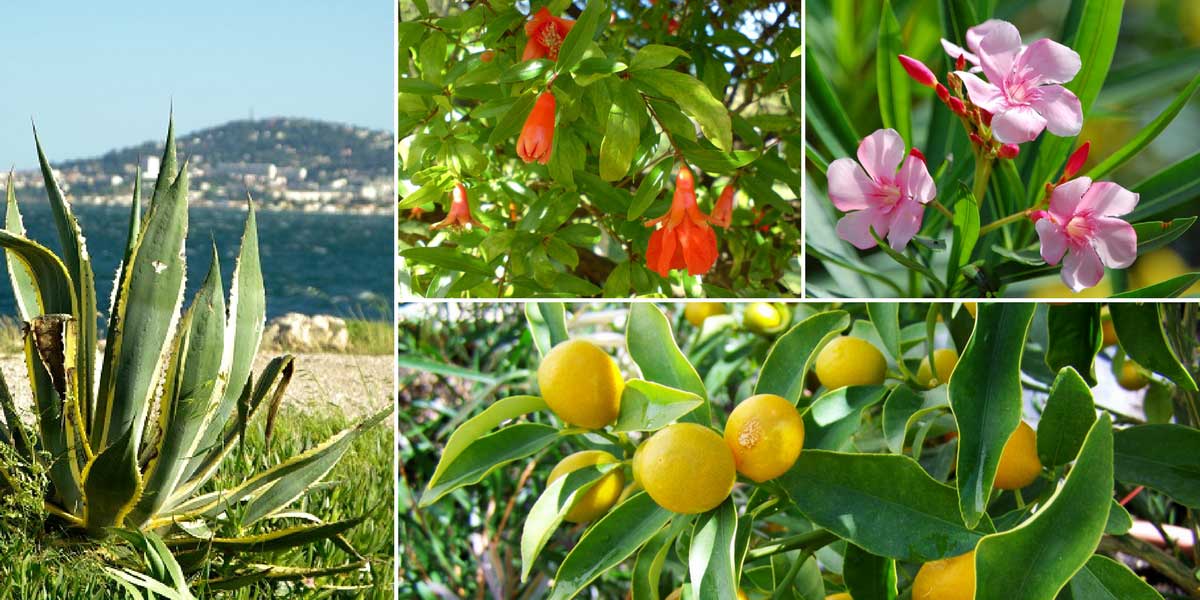
You can integrate citrus trees into a Mediterranean-style garden. Here, Agave americana ‘Variegata’, Punica granatum var. Nana, Nerium oleander (photo Challiyan), and lemon tree
Do not hesitate to combine different varieties of citrus trees. You can create a small collection by grouping together orange trees, lemon trees, kumquats, clementine trees… You will enjoy the fragrance of their blossoms more, and the gathered fruits will bring a warm and dynamic tone to the garden, thanks to their bright yellow and orange hues. Feel free to add other fruit and utility trees, such as sea buckthorns, olive trees, strawberry trees, fig trees, or capers, to create a kind of Mediterranean orchard.
Finally, since it has large thorns, you can use Poncirus trifoliata as a defensive hedge! Either by planting several young plants next to each other or by alternating with other thorny bushes (Pyracantha, Berberis, Rosa rugosa…).
Did you know?
- Menton and the Lemon Festival
The town of Menton, on the French Riviera, enjoys a climate conducive to the cultivation of citrus trees. For several hundred years, lemon trees have been grown there. Highly regarded, the Menton lemon now holds a PGI (Protected Geographical Indication) label. Every year, at the end of winter, this town hosts the Lemon Festival, which features a parade with numerous floats, sculptures, and decorations made from citrus fruits.
- An Indoor Citrus
Citrus mitis, the dwarf orange tree, is one of the few citrus trees that can be grown indoors all year round, for example, in an apartment.
- Medicinal Properties
In addition to their high vitamin C content, citrus fruits also possess numerous medicinal properties. They are tonic, reduce the risk of cardiovascular diseases, and purify and drain the body. They also have an antioxidant effect. Grapefruit seed extract has antibiotic properties, helping to combat fungi, microbes, and bacterium. The essential oil of the bitter orange tree (neroli) and orange blossom water are known to calm anxiety and promote sleep.
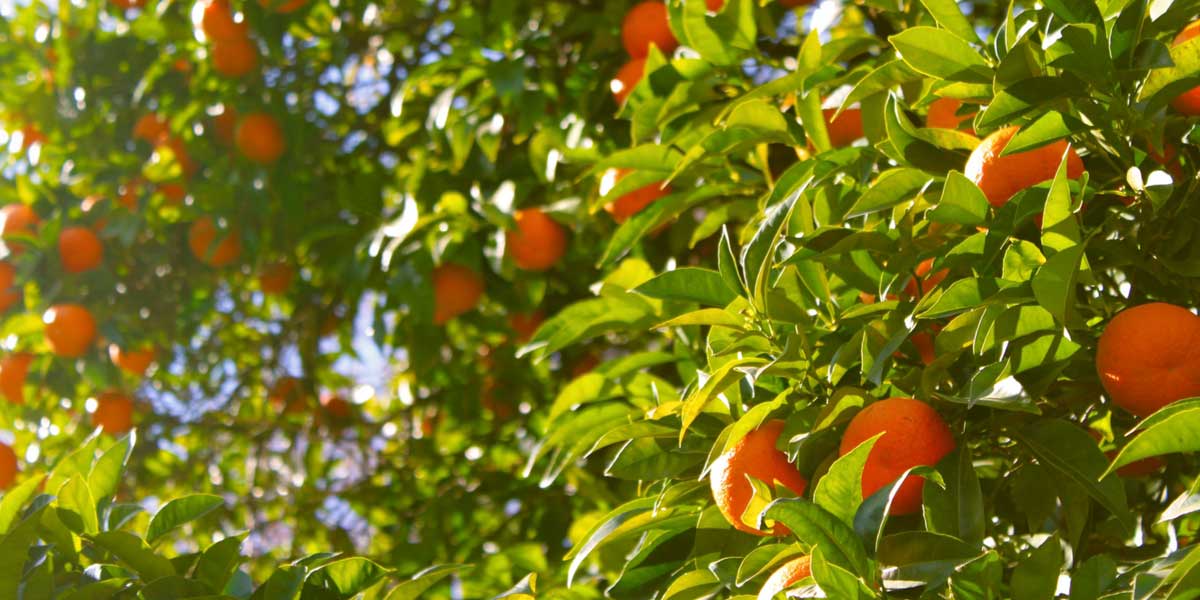
Useful resources
- Discover our range of citrus trees!
- All our tips for growing an orange tree in a pot
- An article by Ingrid on our blog – The Yuzu: a highly sought-after Japanese citrus tree
- Our advice sheet – Citrus trees: planting and care
- Discover our selection of 7 citrus trees to grow in pots
- Check out our tips for growing bergamot, growing calamondin
- An article by Michael – Poncirus trifoliata, an ornamental citrus tree that packs a punch
- A blog about citrus trees and their cultivation
- You can also check the book Citrus Trees – How to Choose and Grow Them Easily, by Bénédicte and Michel BACHES, published by Ulmer
- Discover our tutorials: How to make amber apples?, and How to make bergamot syrup?
- Learn more about growing Yuzu with Leïla’s tips!
- Find out more about the Lemon Festival ® in Menton with Sophie on the blog
- Our advice sheets: Growing Kumquat; Growing Combava lemon; Growing bigaradier
- Our advice sheet: Citrus trees: how to get fruit?
- A quirky and humorous article: How to fail at caring for your citrus trees in winter?
- Our recipes and uses of citrus trees in cooking: Homemade citrus jam: my revamped recipe, How to make homemade preserved lemons? and the English recipe for lemon curd.
- Subscribe!
- Contents
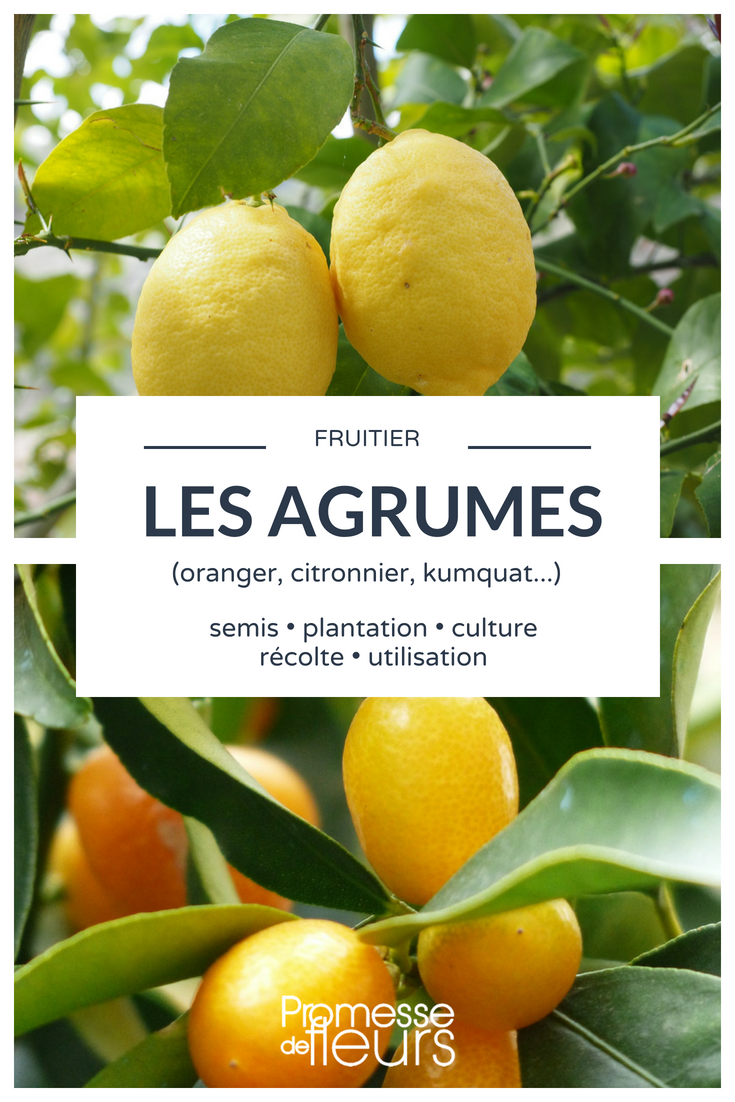
































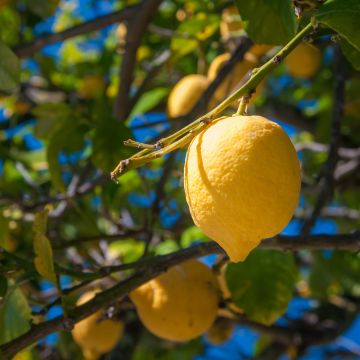

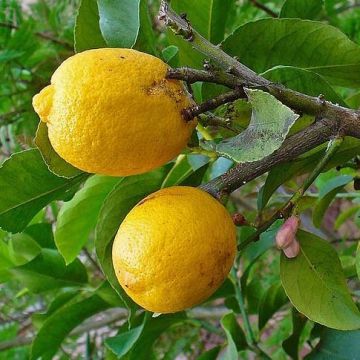



Comments